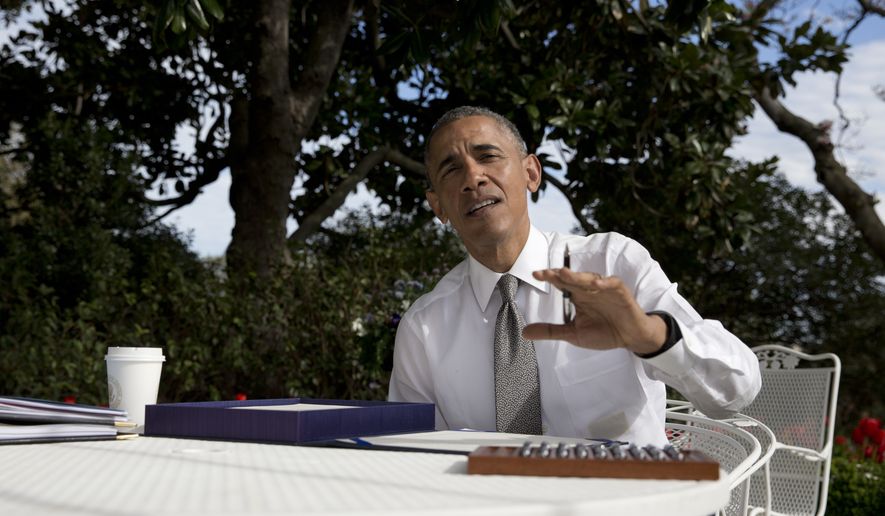Obamacare insurance premiums will leap 6 percent a year over the next decade, and companies will drop millions of employees from their health plans as insurers and employers calibrate their offerings for the new marketplace, the Congressional Budget Office said Thursday.
The health law will continue to steadily grow in both cost and coverage, working toward President Obama’s goal of expanding those with access to insurance — but the government will shell out tens of billions of dollars to pay for it, analysts said in their latest evaluation of the federal budget and the Affordable Care Act, which is driving much of the change.
Medicaid, the federal-state health program for the poor, is growing particularly fast, with some 13 million people signed up for the program this year because of Obamacare. That’s up 3 million from 2015, and it will grow to 19 million by 2026, the CBO said.
Some of those millions will be the working poor, who could get coverage through their jobs but choose Medicaid instead. But millions of others will be thrown out of their plans by businesses who decide it’s cheaper to pay the government penalty than to offer coverage to all of their employers.
“Over the next few years, more employers are expected to respond to the availability of coverage through the marketplaces by declining to offer insurance to their employees,” the CBO said. “As employers change their insurance offerings, some of their employers are expected to enroll in coverage through the marketplaces.”
Between the pull of Medicaid and the push of employers dumping plans, some 9 million fewer people will be getting coverage through their jobs than would have been the case without Obamacare, analysts said.
The expanded number of people on Medicaid, and the growing number of people buying insurance on the Obamacare health exchanges with the aid of taxpayer subsidies, will push up the cost of coverage some $136 billion over last year’s projection.
The health law turned six this week, with Democrats saying it has lived up to its promise of covering millions of Americans who lacked insurance before.
In 2010 the Census Bureau said more than 16 percent of residents in the U.S. lacked insurance. The CBO says that, under Obamacare, that will drop to about 10 percent — or about 27 million people. Many of those are illegal immigrants ineligible for Obamacare, some others are exempt, and still others choose to pay the tax penalty rather than obtain insurance.
But with the tax penalty biting ever deeper, interest in Obamacare’s exchanges — the marketplaces that are the crux of the health law — is growing. The CBO said some 13 million people selected plans this year, and that will rise to 15 million next year, and to as many as 19 million people later this decade.
Up to 16 million of those will be getting government subsidies to buy their insurance.
For the broader federal budget, the CBO said revenue is slightly lower than projected, but spending is even lower. That works out to a deficit of $534 billion, which is better than the estimate of a few months ago — though still worse than the 2015 total of $438 billion.
It’s the first time the deficit has spiked since 2009, when President Obama took office amid the economic downturn and massive government deficit spending to try to stimulate it.
The new numbers should be a wake-up call to Congress and the White House, budget watchdogs said.
“The era of declining deficits has clearly come to an end,” Michael A. Peterson, president of the Peter G. Peterson Foundation, said in a statement asking the presidential candidates to address the growing problem. “Americans are asking candidates to put forward a plan, and candidates have a responsibility to tell voters their ideas to put our debt on a sustainable path and build a strong economy in the decades ahead.”
An analysis by the Center for a Responsible Federal Budget, which crunched the numbers on the available plans of each of the five major presidential candidates still in the race, found only Ohio Gov. John Kasich, on the GOP side, would cut government spending, by about 2 percent.
Democratic front-runner Hillary Clinton would oversee a 2 percent spending hike over the next decade, GOP front-runner Donald Trump would raise spending by 3 percent, Sen. Ted Cruz would boost it by 6 percent, and Sen. Bernard Sanders wants a massive 33 percent hike in government outlays.
• Stephen Dinan can be reached at sdinan@washingtontimes.com.




Please read our comment policy before commenting.